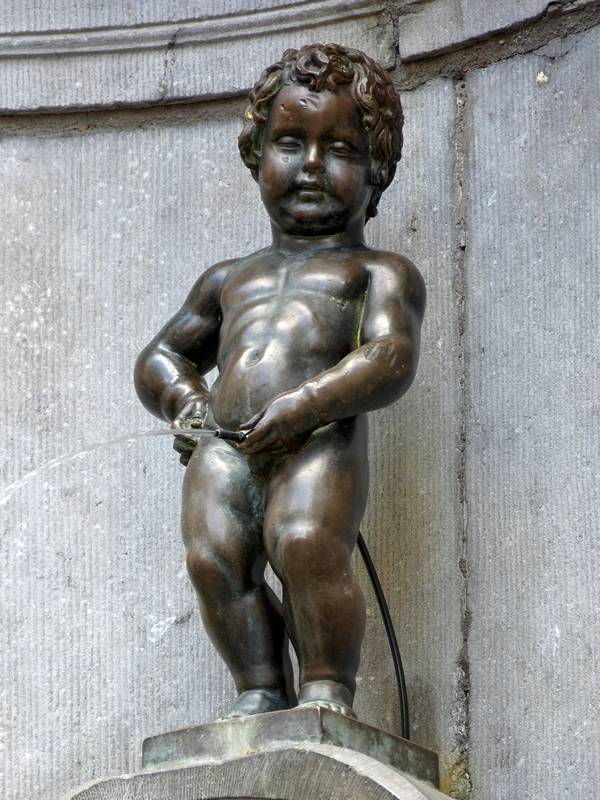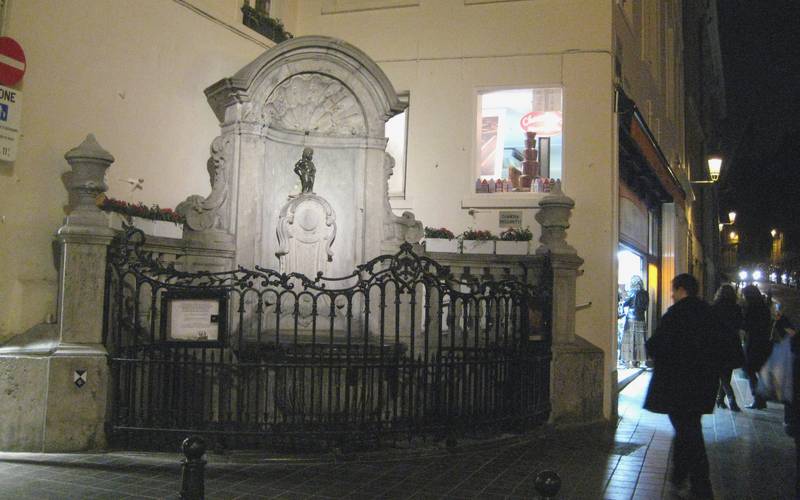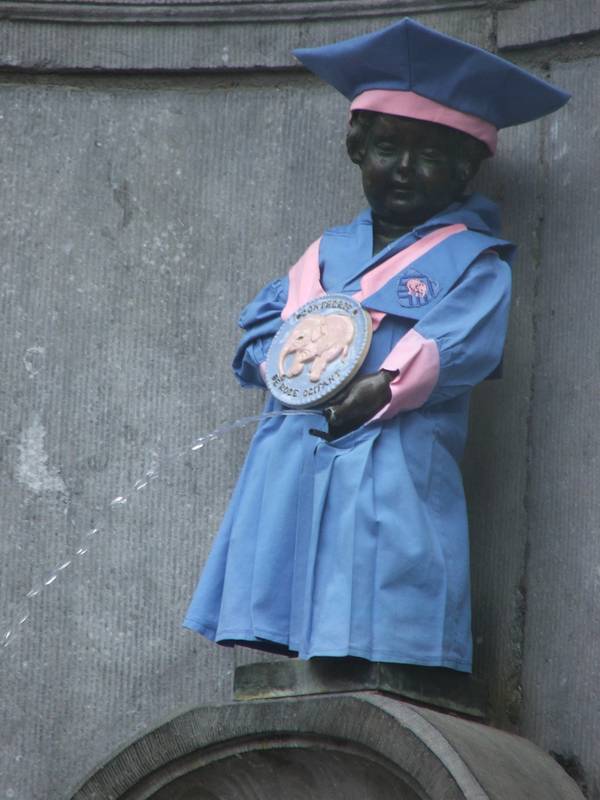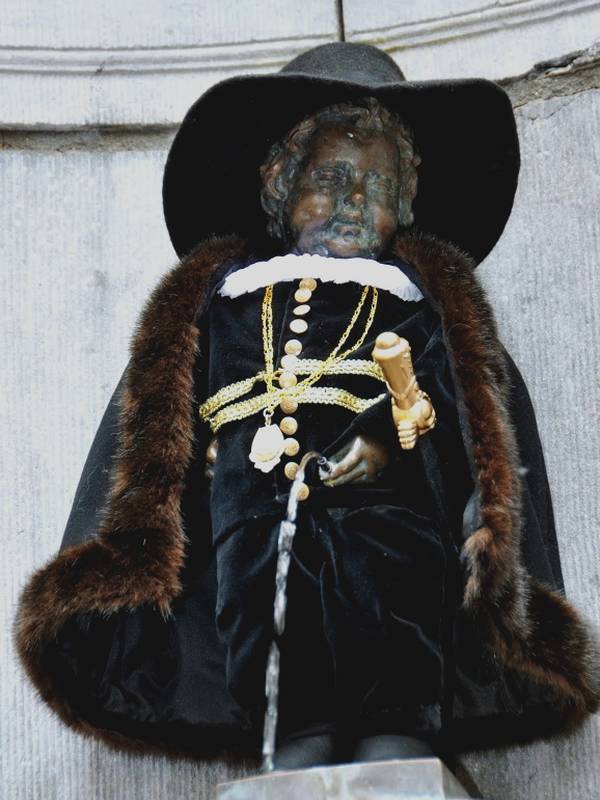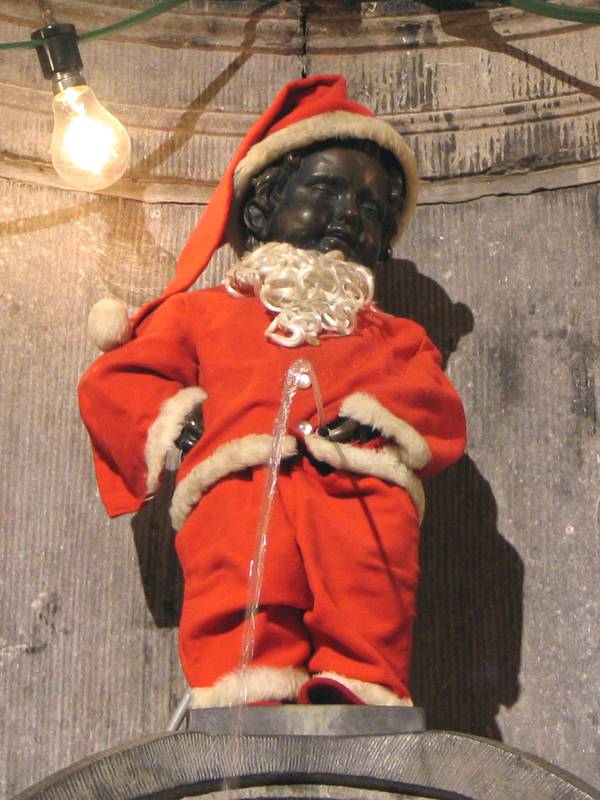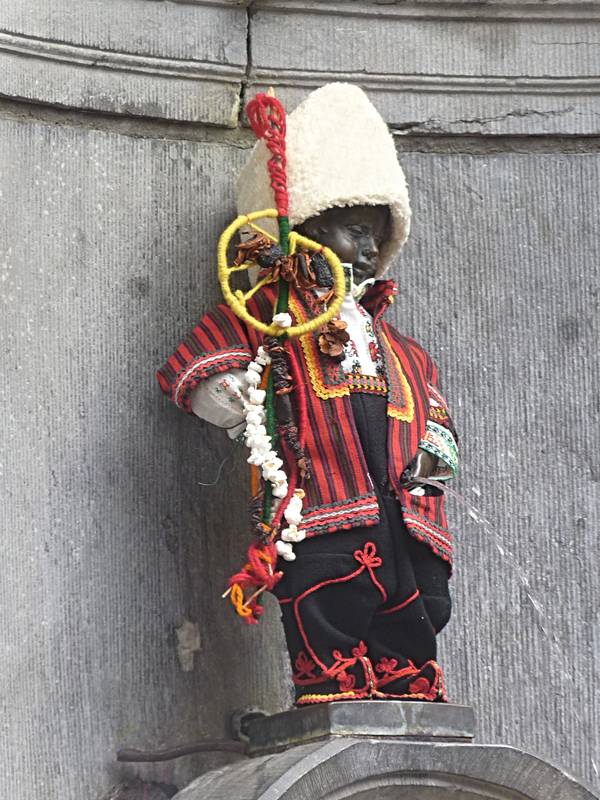The Manneken Pis is a small bronze statue of 55cm and a half which serves as a fountain. Despite its small size, it is one of the most famous monuments in Belgium and probably the symbol of this country.
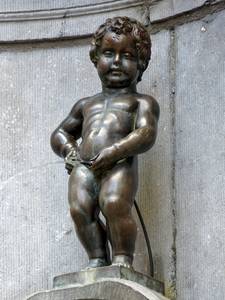
The Manneken Pis
What makes this fountain an original work is that it represents a little naked boy urinating in front of the public, the jet serving as a fountain. He has become the representative of Belgian impertinence, and also a source of endless amusement for generations of tourists.
In practice, "Manneken Pis" means "little boy who urinates", nothing original in it. It has a recent female counterpart, the Jeanneke-Pis, a statue of a little girl urinating - obviously - but it is very little known, alas.
The interest of the Manneken Pis lies in its history that has passed through the centuries. Founded in 1619 by Jerome Duquesnoy the Elder on the forms of a statue dating from the 15th century, it has been exposed to public view for 4 centuries and serves as a symbol of recognition of the Belgians. The statue represents a little boy. It is chubby, with a nice boiled sympathetic whose face borders the adult attitude. He has a small double-chin. His hair, abundant, is very wavy and we guess blond, despite the fact that it is impossible to know how was the model that was used in its manufacture. He holds the sex by the left hand, the Manneken Pis seems to be left-handed.
On the statue itself there is not much more to say, except to highlight the quality of work in the establishment of the mold, the model is very successful. It is a bronze made by cast bronze cast in lost wax, a technique that consists of making a copy of the wax statue that is melted once in the mold. The Manneken Pis is hollow and weighs 17kg.
The jet starts from a small metal pipe fed from the rear, via another hose, which is unfortunately visible. We would have liked that the feeding of the fountain is done by a more discreet means. The statue is placed on a small bronze base. Bronze is an alloy of copper and tin, a material that is widely used, even nowadays, for the molding of statues.
The setting
Of course, the beauty of the Manneken Pis is not just the statue, it's also the decor that surrounds it. This decor has changed several times since the creation of the fountain. Before the creation of this statue there already existed a similar statue, there is a trace in the local documentation from the middle of the fifteenth century. It was used to supply water to the city at a time when running water was not obvious. A pipe ran through the streets and passed at regular intervals by fountains, easy ways to recover water for the population. A statue of a naked child urinating was created and placed rue du Chêne. At that time she was on a column and her jet went into two large rectangular basins that we imagined to be kind of washhouses.
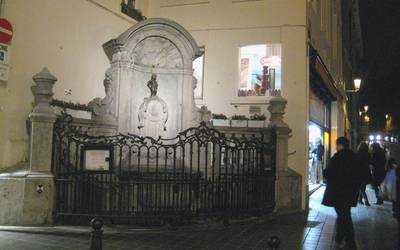
The Manneken Pis
The basins were destroyed and rebuilt during the installation of the new statue, in 1620, one year after his order, then the column disappeared in 1770 to the profile of a rockery decoration from another fountain destroyed. It is this scenery that we see today. It is made of a protective stele dug slightly from a cradle niche. The upper part is in the form of scallop shell, it is separated from the rest by a stone border. The scallop shell itself is decorated with some flowers. The protective wall houses a base with rounded shapes, decorated with stylized plant motifs as they were made in the late eighteenth century. The statue is placed on this base.
The set is placed in a corner and closed by a heavy grid. There are no special restrictions to see it, just go there.
His outfits
Often, the visitor is surprised to see that the Manneken Pis is dressed! It is rare, but it is quite normal, to dress this statue is a tradition that goes back to its creation. We can even say that the greatest kings of Europe have offered him outfits. Among them, the governor-general Maximilian of Bavaria (1695) or the king of France Louis XV (1747). But these outfits remained little used until the beginning of the 20th century.
Between the two world wars the movement of accumulation of outfits began to take place. At the beginning of the Second World War, the Manneken Pis had a few dozen outfits, and after the war he received more and more. Each year his wardrobe increases by several dozen clothes, and nowadays he has more than 1000!
Besides, these clothes were initially on display in the Brussels City Museum, but as it took up too much space, a new exhibition hall opened at 19 rue du Chêne, just a stone's throw from the statue. We see the main outfits he has, the most emblematic too, but not the entire collection, it would require too much space.
Here are some examples of outfits that the Manneken Pis wore a day. In order, below, he is in uniform of the Brotherhood of the Pink Elephant, Burgomaster of the Lignages of Brussels, of Santa Claus and in clothes of Bulgarian.
Learn more about his costums.
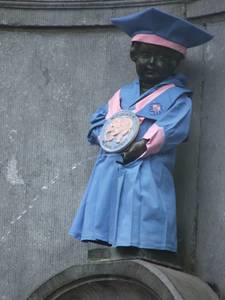
Manneken Pis
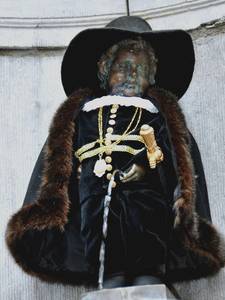
Manneken Pis
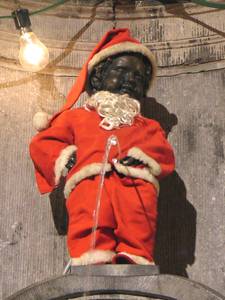
Manneken Pis
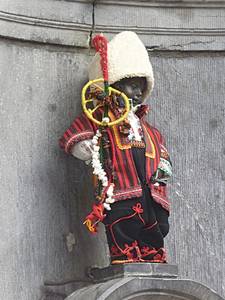
Manneken Pis






